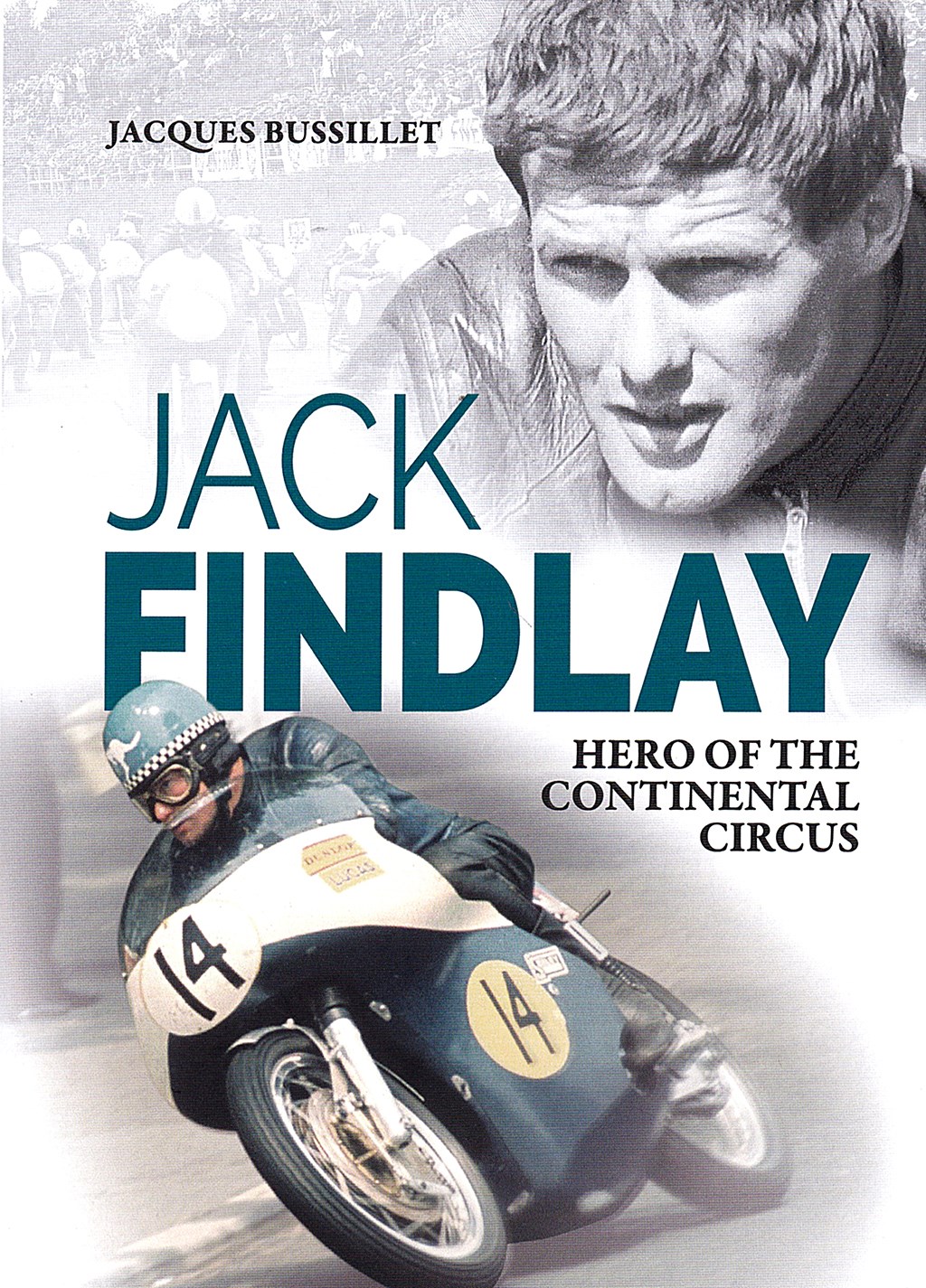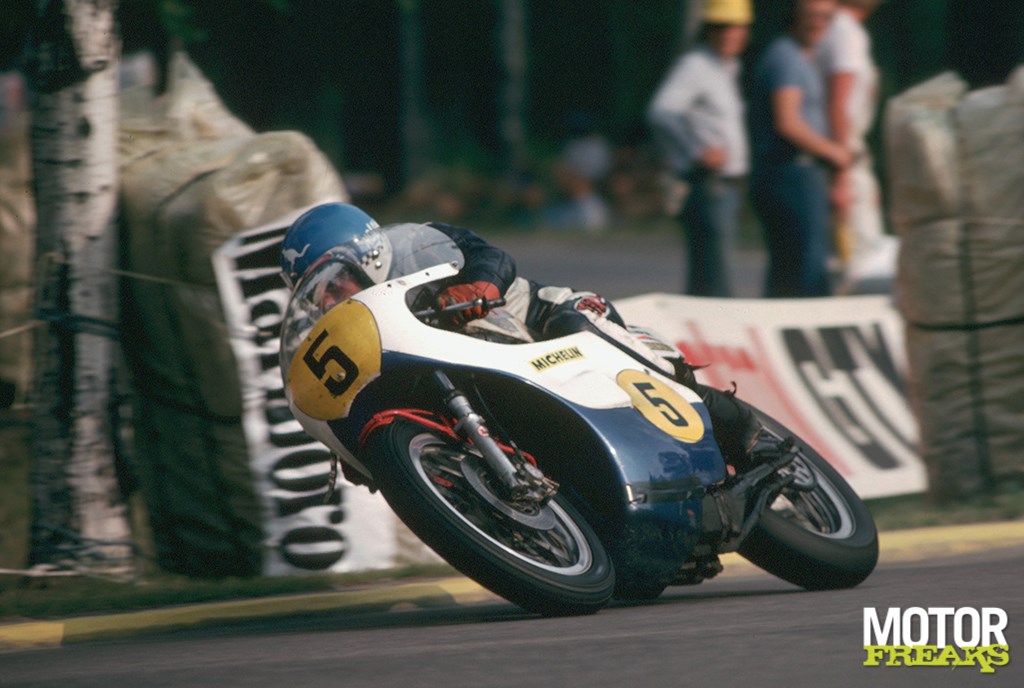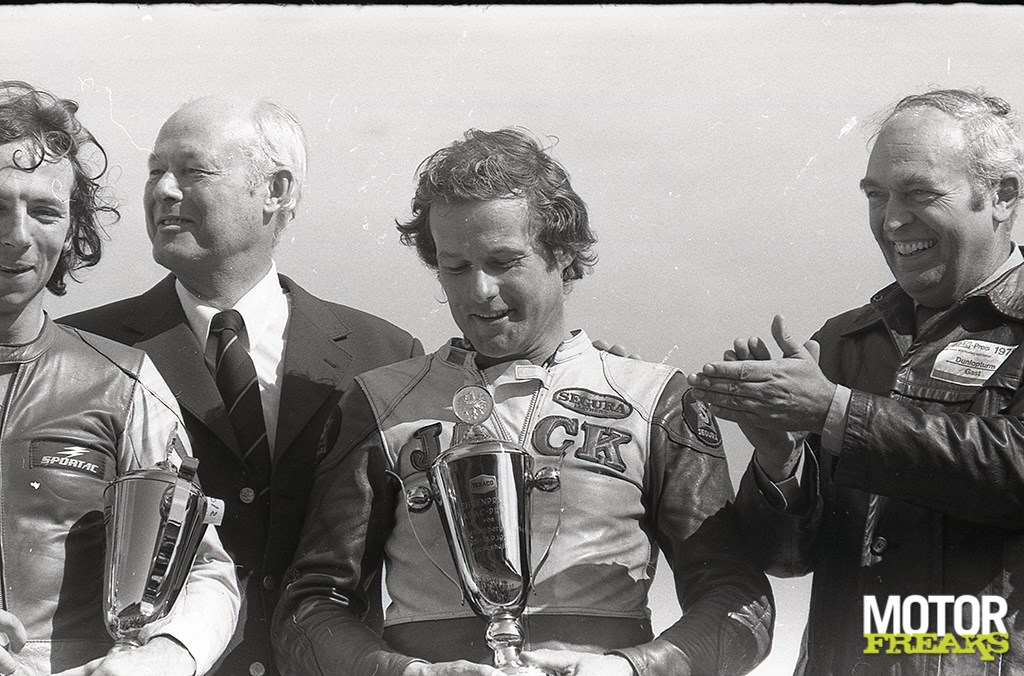The Australian Jack Findlay was a pivotal figure in international road racing between 1958 and 1978. As the prince of private drivers, he was a legendary figure who became a role model for the modern gladiators of the sport. The French sports journalist Jacques Bussillet wrote a biography in 2024, recently an English translation was released.

The Australian Jack Findlay was the private champion among the private champions-the man who embodied the precarious existence of the nomadic group of self-finance drivers who made up 90% of the European road race in the 1960s. Findlay and his companions drove every weekend in every race that even earned them a small starting money with which they could make ends meet, whether it was a World Championship Grand Prix or a dangerous street race in a small town. They formed the supporting cast in the titanic struggle between Japanese and European factory teams, which determined what is generally considered to be the golden age of Motorsport. This was always recorded by the French film director Jérome Laperrousaz in his film Continental Circus from 1972, an ode to those brave individuals who passed all kinds of hardships out of pure love for the sport. In this atmospheric, against all expectations in epic film, Jack Findlay played the role of the underdog hero who fought against the power of Honda and MV Agusta.
Jack Findlay was born in 1935 in Mooroopna, a rural town in the center of Victoria, 200 km north of Melbourne. He had an inconspicuous racing career in Australia, while working as an accountant in training at the local Commonwealth Bank. But in 1958 he became one of the many ‘Down Under’ drivers who went to Europe to join the Continental Circus. After bought the motorcycle in 1962 with which he would remain connected forever, the unique McINTYRE Matchless G50, he became the prince of the private riders. He finished third in the 500cc world championship in 1966, behind the omnipresent duo Agostini and Hailwood, and as second behind AGO in 1968, like so often best of the rest. But while several of his circus companions were blessed with lucrative Japanese factory contracts, Findlay seemed to be the forgotten man-until 1973, when Suzuki finally came to knock.

Jack, who had since settled in Milan in the workshop of the Italian brake specialist Daniele Fontana, had won his first victory in the 500cc Grand Prix in the Ulster GP of 1971 on the Jada, a special motorcycle devised by the air -cooled Suzuki TR500 – hence the name. Because this motorcycle was registered as Suzuki, this meant the first victory of the Japanese company in the 500 GP and the Australian earned a contract at Suzuki Italia before 1973, to ride on a factory TR500 XR05 Twin in the 500cc, as well as on a TR750 XR11. On the 500 Suzuki, Jack won the most important victory from his career by winning the Isle of Man Senior TT, while on the larger engine he became third in the points classification behind the debutant Barry Sheene, who became the Formula 750 champion, after the victory in the Swedish round in Anderstorp.
This led to a fully Suzuki factory contract for 1974, in which Jack Findlay Suzuki’s best placed rider was in both championships. He beat his teammate Barry Sheene in both championships by again becoming third in the F750 series and fifth in the 500cc classification on the new RG500 XR15. The experienced Australian played an important role in the development of the new four-cylinder, but his age now started to play a role in the eyes of the Japanese and at the age of 40 he was put out of the 1975 team by Suzuki. He returned to life as a private driver and by that time there was only one motorcycle with which a self -financed rider could race, the new four -cylinder Yamaha TZ750.
With the help of his fellow countryman Kel Carruthers, a colleague from Continental Circus who now worked full -time for Yamaha in the US, Findlay managed to get one of these engines. But in addition to the F750 series of the FIM, Jack de Yamaha also decided to use the 500GP class, by mounting TZ250 cylinders and heads on the TZ750 carter. The Findlay Yamaha TZ750 thus fulfilled a dual function in the 1975 season: he was not only able to conquer Jack with one point difference on Barry Sheene in the world title in the F750-class-and thus to take away Suzuki a second consecutive world title, a suitable revenge for his season to Jack! -But also to finish tenth in the better paid 500cc world championship, with two podium places in Spa and Imatra. It was certainly the most versatile, but also the hardest working Yamaha TZ750 who ever raced!

Jack Findlay switched to a new RG500 Suzuki for customers before 1976, but retained the Yamaha to defend his F750 title. But it was a lean year, with a second place in the British F750 round as his best result in that series, matched by a second place in the Swedish GP in Anderstorp on the RG500. Jack stopped racing at the end of 1978 after a European racing career of 20 years. He settled in France, where he married Dominique Monneret, the widow of the French GP star Georges Monneret, and became a developer for Michelin. In addition to English, foundlay also spoke French and Italian and became technical director of the FIM for Grand Prix races in 1992, a position he held until his retirement in 2001. He died in May 2007 after a courageous life full of passion, in which he was against all expectations in one of the longest-serving and most influential drivers.
In 2024, an excellent biography of Jack Findlay, written by Jacques Bussillet, former correspondent for the Motorcycle GP for the French sports day magazine L’Equipe and the weekly motor magazine Moto Journal. Jacques reported on GP races for twenty years, where he got to know Jack Findlay well. This is reflected in the book, which offers a rare authenticity and depth in his reporting on the ups and downs in the life of the Prince of the Private Drivers. A 160 -page English -language hardcover version with 240 photos is now published by Veloce www.veloce.co.uk under ISBN 9781836440475.
– Thanks for information from Motorfreaks.